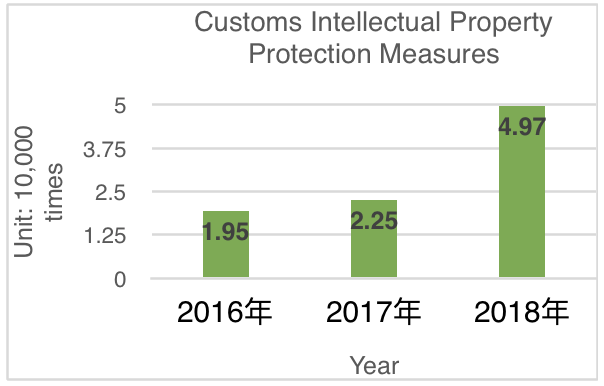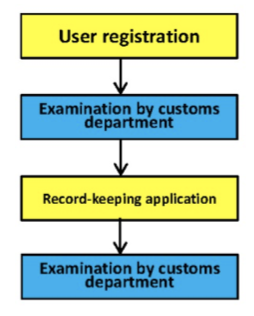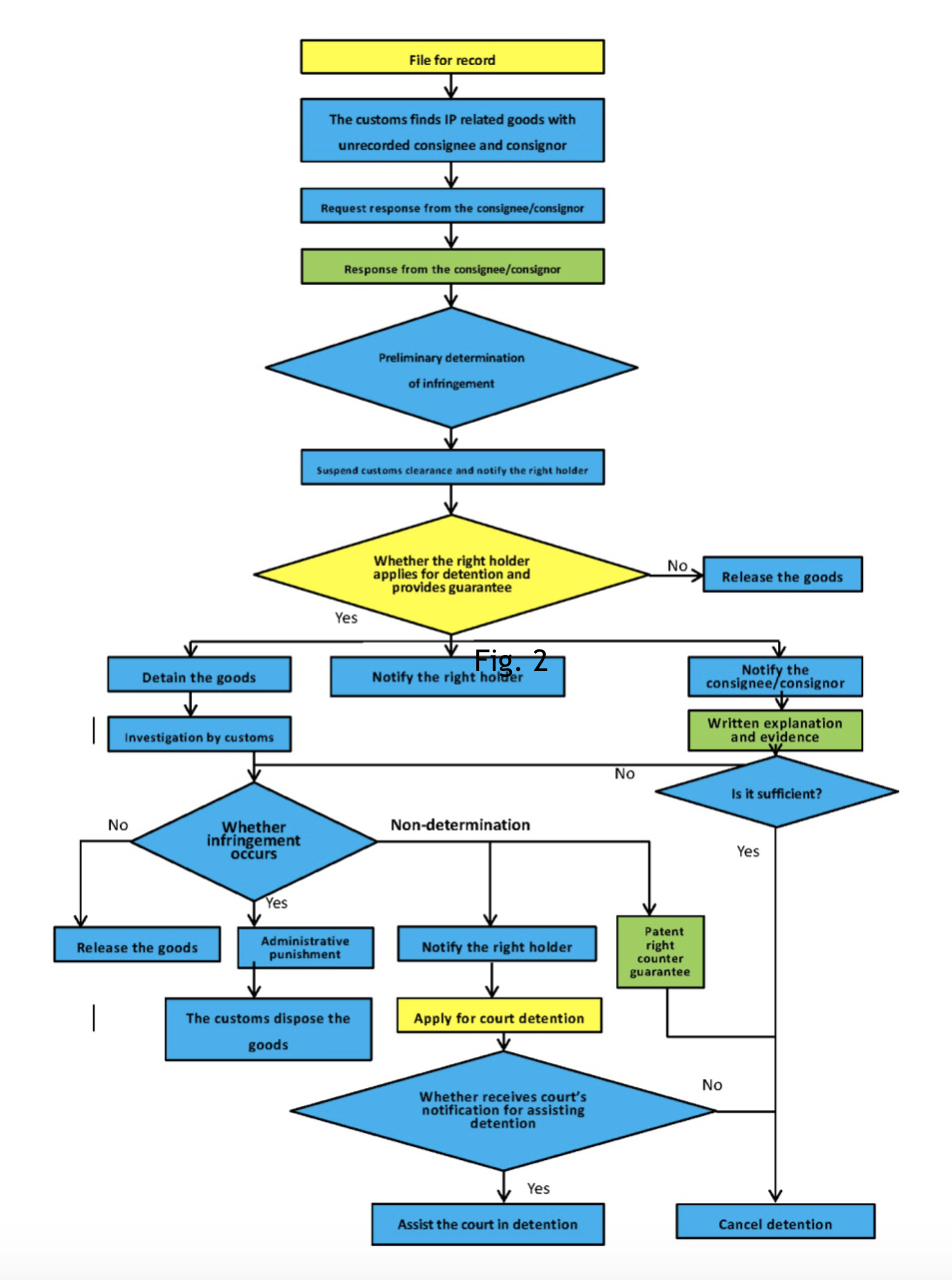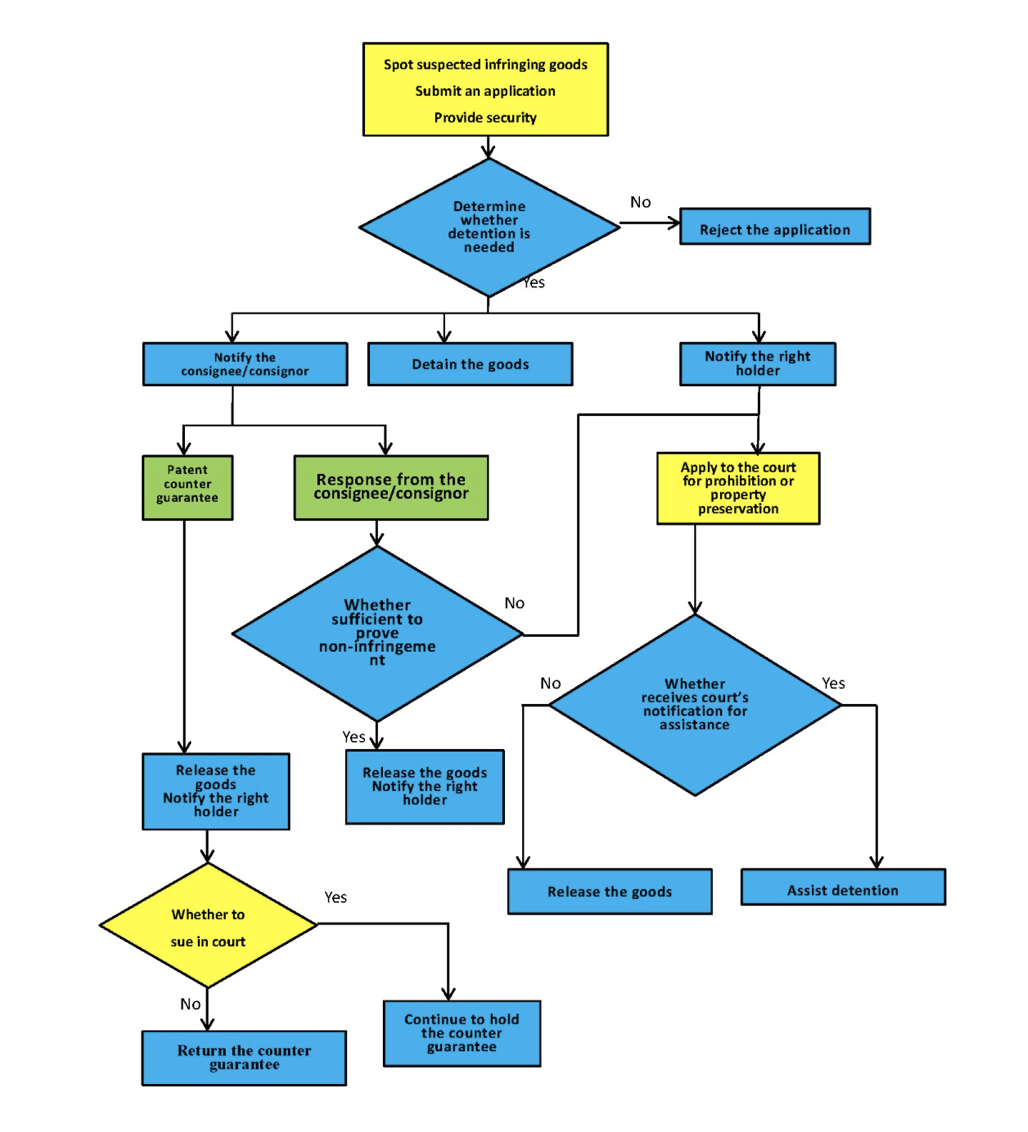Specifically, the plan discloses that in 2020, the General Administration of market supervision plans to draft seven draft laws and administrative regulations for examination, including the PRC anti-monopoly law, PRC product quality law, regulations on commercial registration, regulations of the market supervision and Administration Institute, regulations of PRC on certification and accreditation, regulations of PRC for the implementation of the drug administration law, and Implementing Regulations of the PRC Patent Law.
As for the time limit for the completion of the above-mentioned legislative work, the plan also requires that the first category project of departmental regulations must submit the draft and relevant materials for examination before June 30, 2020. By doing so, there is enough time for review, deliberation and other work to ensure completion by the end of the year. High-quality and efficient promotion of the second category of departmental rules and regulations, as well as laws and administrative regulations should be ensured, and they should be submitted for examination on schedule.
(Source: Business Economics)
Notice on the scope of application of remedies for patent, trademark and layout design of integrated circuit during novel coronavirus pneumonia outbreak
During novel coronavirus pneumonia outbreak, in order to effectively protect the legitimate rights and interests of the parties involved in patents, trademarks and layout design of integrated circuits, the China National Intellectual Property Administration issued announcement No. 350 on January 28, 2020 to specify relief to delayed procedures for handling patents, trademarks and layout design of integrated circuits due to the impact of the epidemic. The announcement is applicable to all parties in countries and regions affected by the epidemic. The parties affected by the epidemic situation may go through the relevant formalities in accordance with the requirements of Announcement No. 350.
(Source: State Intellectual Property Office on March 27, 2020)
Supreme Court: seeking public opinions on the enforcement of intellectual property judgments and strengthening efforts to ensure the effective enforcement of intellectual property judgments
On March 15, the Supreme People’s Court issued a notice on the implementation plan for the enforcement of intellectual property judgments (Draft for comments) and the guidelines for the enforcement of intellectual property judgments (Draft for comments). The deadline for feedback is May 15, 2020. This is the first time that the Supreme Court has, based on the actual situation of the implementation of intellectual property at this stage, specially formulated an implementation plan and implementation guidelines for the implementation of intellectual property. The drafting of this opinion draft shows that the court attaches more importance to IP issues.
The effective solution to the enforcement of intellectual property judgment is the key point to resolve disputes, and also an important guarantee to protect the rights and interests of the parties. With significant improvement of China’s scientific and technological innovation ability, the field of intellectual property has made great progress. The number of intellectual property cases is increasing year by year, and the implementation of intellectual property cases is becoming more and more difficult. Especially after the establishment of punitive compensation mechanism of intellectual property rights in recent years, there are a large number of cases of court enforcement. So how to effectively standardize the implementation is facing a series of difficulties, including: high infringement compensation, the jurisdiction of court enforcement; the issue of the parties initiating the compulsory execution procedure; how to balance the rights and interests of both parties effectively; the execution of preservation procedure before and during litigation, and remedies in execution.
(Source: Issues about intellectual property)
Shen Changyu: the total number of patent agents is insufficient, their ability is not strong enough, and their business is not refined enough, in China
Recently, the all China Patent Agents Association published on its official website the summary of a speech of Shen Changyu, director of the China National Intellectual Property Administration, at the 10th National Congress of website of all China Patent Agents Association. It is mentioned that patent agency is an important part of the whole patent system, as well as a bridge and link between the inventor and the examiner, which is highly valued by the China National Intellectual Property Administration. In recent years, China’s patent agency industry has a strong momentum of development. By the end of November 2019, there were 2,649 patent agencies nationwide, with more than 20,000 licensed patent agents. Compared with the end of 2012, they increased by 1.9 times and 1.5 times respectively. It has played an important role in supporting the development of China’s intellectual property cause, serving the building of an innovative country and promoting a high level of opening up.
However, there are still some problems that cannot be ignored in the current agency industry. For example, the patent agent team as a whole still has some problems, such as insufficient quantity and business ability. There is imbalance in the development of agency industry among regions. The whole industry is not standardized enough, and a few agencies even have violations. All of these need to be improved in future work.
At present, there are 42,000 patent attorneys in the United States, 11,500 in Japan, 3,800 in South Korea and 12,700 in Europe. In comparison, there are 48,000 patent agents in our country, of which 20,000 are practicing.
In terms of the number of patent applications for invention, the United States last year had 600,000, Japan 310,000, South Korea 210,000, Europe 170,000, and China 1.54 million. The ratio of the number of patent applications to the number of agents is about 14 in the United States, 27 in Japan, 55 in South Korea, 13.7 in Europe and 76 in China.
Only in terms of quantity, the ratio between the number of applications and the number of agents in China is still the highest, and there is still some room for development. Of course, the data is not immutable. For example, in the first 11 months of 2019, the number of patent applications for invention dropped year on year. Therefore, we should focus on the core goal of building a strong intellectual property country, coordinate the relationship between quantity and quality, and achieve steady progress and high-quality development.
(Source: Business Economics)
120 million claim on new energy patents! Tafel’s response
Recently, the patent war of 120 million on new energy vehicle batteries has attracted people’s attention. It is reported that Ningde times sued Jiangsu Tafel New Energy Technology Co., Ltd. (hereinafter referred to as “Tafel”) for patent infringement. Ningde times believes that Tafel infringed the technical patent of battery explosion-proof valve, seriously disturbed the normal market order, and its behavior was suspected of infringing the intellectual property rights of Ningde times.
At present, the Fujian Higher People’s court accepted the case in early January this year, with the object of the case being 120 million yuan.
(source: IPRdaily)
Actual loss + punitive damages, “tiktok” win a lawsuit, a total of 2 million! First in Hangzhou!
The newly revised trademark law expressly stipulates “punitive damages”. After being identified as trademark infringement, the infringer should not only bear the actual loss caused by the infringement, but also face the punitive compensation of more than one time and less than five times.
On March 26, Hangzhou Internet Court (Hangzhou Railway Transportation Court) made a public judgment on two cases: a trademark infringement and unfair competition dispute, and a copyright infringement dispute involving Beijing bybeat Technology Co., Ltd., Beijing microbroadcast Vision Technology Co., Ltd., a Xdoushang company in Hangzhou, a Xdouyou company in Hangzhou, a technology company, and Yang XX. Among them, the case of trademark infringement and unfair competition dispute is the first case of punitive damages in Hangzhou, after the fourth revision of the Trademark Law of the People’s Republic of China. The famous brand “tiktok” won 2 million of the lawsuit.
(Source: Lawyers Learning Law)
Dragon Special Report and Agency Practice
Practice of Customs Intellectual Property Protection in China
At present, China has entered an era of attaching importance to intellectual property rights. Both Chinese and foreign enterprises have gradually accumulated their own intellectual property rights in China. The Chinese government has also put forward the goal and determination of giving strong protection to intellectual property rights at different levels, and is putting it into action. As a country with active import and export trade, the Customs Protection of intellectual property can prevent infringing products from entering China. On the other hand, it can prevent the export of infringing products, protect the legitimate rights and interests of Chinese and foreign intellectual property rights holders, and maintain the normal order of import and export trade.
1. Current situation of Customs Intellectual Property Protection
According to the statistics of the General Administration of customs, the number of IPR protection measures taken in 2016-2018 is shown in Table 1 below. Obviously, the number of intellectual property protection measures is increasing with every passing year.

Fig. 1
In addition, according to the statistics released by the General Administration of Customs on April 23, 2019, the intellectual property protection of Customs has the following characteristics in 2018: (1) According to the statistics of the number of detained goods, the goods infringing trademark rights account for 96.70% of the total number. (2) The main mode of law enforcement is still active seizure by the customs in accordance with authority, and the number of detention initiated in accordance with authority accounts for 96.96% of the total number of times. (3) The seizure of infringing goods is still concentrated in export, and the goods detained in export account for 99.48% of the total number. (4) The eastern coastal area customs is still the main battlefield of customs law enforcement. Ningbo, Hangzhou and other top ten customs in China hold about 95.27% of the total amount of detained goods. (5) The quantity of light industrial products and electronic products detained has increased by a large margin.
In addition, a typical case in 2018 involves a patent infringement case discovered by Shenzhen Customs. In order to actively respond to the demands of a large number of high-tech intellectual property enterprises for patent protection, Shenzhen Customs organized experts to analyze the patent rights of key enterprises, and actively protect the patent rights with good stability and basically established infringement facts. On September 29, 2018, Shenzhen Customs inspected a batch of mechanical keyboards to be exported to South Korea. After the right owner’s on-site inspection and confirmation of suspected infringement, the customs files a case for investigation. Finally, the consignee and consignor reach a settlement agreement with the right owner, which effectively protects the legitimate rights of the right owner.
It can be seen that the protection of intellectual property rights by Chinese customs is continuously strengthened. Although it is now mainly concentrated in the field of trademarks, the authority is also actively exploring other intellectual property rights, such as patents.
2. Objects of Customs Intellectual Property Protection
According to Article 2 of the regulations on the Customs Protection of intellectual property rights, the customs shall protect the exclusive right to use trademarks, copyrights, rights related to copyrights and patent rights related to import and export goods. In addition, the customs also protects the exclusive rights of the Olympic logo and the world expo logo.
3. Filing procedure
Because record keeping is the premise for the customs to take active protective measures, and because record keeping does help the customs to discover and investigate infringing goods, right holders, especially trademark owners, are recommended to actively file for record.
The filing of intellectual property is conducted through the “intellectual property customs protection filing subsystem (www.haiguanbeian.com)” of the General Administration of customs. The flow chart of Fig. 1 will be used for explanation.

Fig. 1
Step 1. Register as user in the filing system. Users can be right owner or agent. When an agent registers in its own name, it can manage the rights of multiple right owners it represents in a unified way. However, one right holder can only be managed by one agent user, and the right owner cannot submit a new recording application through its own account. Therefore, it is suggested that right owners register their own accounts or entrust an agent to register on their behalf. In addition, overseas right owners shall submit an application by its office established in China or by its agent in China.
Step 2. The General Administration of Customs reviews the registration application and sends the review results to the user’s email address. In addition, users can view the review status on the filing system.
Step 3. Filing application. At this time, it is necessary to enter information related to the right itself, information related to the right holder and certification documents, information related to the agent and certification documents, key products requiring monitoring, and legal user information.
Step 4. The customs examines the filed application and makes a decision on whether to approve the filing within 30 working days. The review progress will be displayed on the filing system. After approval, the filing takes effect and a filing number is generated.
The validity period of the filed record is 10 years from the date the filed record is approved. Within 6 months before the expiration of the record validity period, it is possible to apply to the General Administration of Customs for renewal of the record, and the validity period of each record renewal is 10 years.
4. Enforcement model of intellectual property
The law enforcement model of customs protection of intellectual property is divided into two types: protection by power and protection by application.
4.1 Protection by power
Intellectual property that has been put on record is subject to protection by power. When the customs finds import or export goods suspected of infringement, the detention and investigation procedures are initiated actively. The specific process is shown in Figure 2. Yellow represents the action of the right owner, blue represents the action of the customs, and green represents the action of the consignee and consignor.

Fig. 2
First, the customs finds that the imported and exported goods may infringe a filed intellectual property right. If the manufacturer, importer or exporter of the goods is not the registered legal user of the intellectual property, the customs may require the consignee or consignor to explain the intellectual property status of the relevant goods and submit the relevant supporting documents within the specified time limit. If the consignee or consignor fails to submit relevant documents or the relevant documents submitted cannot prove that the goods are not infringing products, the customs will preliminarily determine the goods as suspected infringing goods, suspend the release and notify the right holder in writing.
The right holder shall submit an application and provide guarantee within 3 working days if it considers that the goods are infringing and necessary to be detained. The amount of the guarantee is calculated as follows.
|
Value of goods (RMB) |
Guarantee (RMB) |
|
<20 thousand |
Value of goods |
|
20 thousand ~20 million |
50% of the value of the goods and no less than 20,000 |
|
>20 million |
100 thousand |
In addition, if the intellectual property right is exclusive right to use trademark, the letter of guarantee of financial institution can be submitted as the general guarantee of the customs protection measures for the exclusive right to use the trademark, without the need to submit the guarantee multiple times.
If the right holder submits an application for detention and provides a guarantee, the customs shall detain the goods, notify the right holder in writing and deliver the detention voucher to the consignee and consignor.
When receiving the detention voucher, the consignee or consignor may submit a written statement and relevant evidence to the customs to prove that the detained goods are not infringing. If the explanation and evidence submitted by the consignee and consignor can clearly show that they are not infringing, for example, they can prove that their products are from the right holder, the detention shall be released.
After detention, the customs shall investigate and determine the infringement within 30 working days from the date of detention. In the process of investigation and determination, the consignee, consignor and right holder may be required to provide relevant information and evidence. In addition, the customs may also request the intellectual property authorities to provide advice.
The results of the customs investigation can be divided into three categories: non-infringement, infringement and non-determination. If no infringement is found, the detained goods shall be released.
If the customs is unable to determine whether infringement occurs, it shall immediately notify the right holder. The right holder may apply to the people’s court for measures to order cessation of infringing act or property preservation. If the customs receives the notice of detaining assistance from the people’s court within 50 working days from the date of detaining, it will assist. If the assistance notice from the people’s court is not received within 50 working days, the goods will be released. In addition, if the intellectual property right is a patent right and the investigation result of the customs is inconclusive, the consignee or consignor may also release the detention by providing a guarantee equal to the value of the goods.
If infringement is found, the customs will confiscate the goods for disposal. In addition, the consignee and consignor face the following legal liabilities.
(1) Administrative responsibility: if the detained goods are confiscated, a fine of less than 30% of the value of the goods shall be imposed.
(2) If a crime is constituted, criminal responsibility shall be investigated according to law, and the customs shall transfer the case to public security departments for handling.
(3) For civil liability, the intellectual property right holder may bring a suit to the people’s court, require the consignee and consignor to bear civil liability and compensate for the loss caused by the import and export infringing goods.
4.2 Protection upon application
Protection upon application refers to the protection procedure initiated upon the intellectual property right holder’s application to the Customs when it finds that the suspected infringing goods are about to be imported or exported.Whether or not the intellectual property is filed with the General Administration of customs, the procedure can be started. The specific process is shown in Figure 3. Yellow represents the action of the right holder, blue represents the action of the customs, and green represents the action of the consignee and consignor.

Fig. 3
When the right holder wants to start the customs protection procedure, it shall submit a written application for detaining the suspected infringing goods to the customs where the goods are cleared and submit a guarantee. The application shall include the right holder’s information, intellectual property related information, the name of the consignee or consignor of suspected infringing goods, the name and specification of the goods, the port where the goods may enter or leave the country, the time and the means of transport, etc. In addition, evidence shall be provided to prove obvious existence of infringing facts.
The purpose of submitting the guarantee is to compensate for the loss that may be caused to the consignee or consignor due to improper application, and to pay for the storage, custody and disposal of the goods after they are detained by the customs. The amount of the guarantee is equal to the value of the goods.
After receiving the detention application of the right holder, the customs will determine whether the detention application conforms to the provisions of Article 13 of the regulations on Customs Protection of intellectual property, that is, whether the application of the right holder has a factual basis. If it is found that the provisions of Article 13 are not met, the application shall be rejected. If the customs determines that the application of the right holder conforms to the provisions of Article 13 of the regulations on the Customs Protection of intellectual property rights, the suspected infringing goods shall be detained, and the right holder and the consignee and consignor shall be informed in writing of the information related to the detained goods. After receiving the notice, the right holder and the consignee or consignor may request the customs to check the detained goods.
If the right holder wants to continue detention of the goods, it shall file an application for action preservation (prohibition) or property preservation with the court as soon as possible, and ensure that the customs receives the court’s notice of assistance in detention within 20 working days after the initial detention act. If the customs does not receive the court’s detention assistance notice within 20 working days, the detention measures shall be lifted and the goods shall be released.
After receiving the detention notice, the consignee or consignor may submit relevant instructions and supporting documents to prove that the detained goods are not infringing. If the explanation and evidence submitted by the consignee are sufficient to clearly prove that the goods are not infringing, the customs shall release the goods and notify the right holder.
When the intellectual property right is patent right, the consignee and consignor may also effectively release the detention by submitting guarantee equivalent to the goods under the condition of submitting non-infringement statement and evidence. The customs will notify the right holder if it agrees to release the detention. If the right holder fails to file an infringement lawsuit with the court within 30 working days after receiving the release notice, the customs will refund the counter guarantee money of the consignee and consignor. If the right holder brings a lawsuit to the court, the counter guarantee of the consignee and consignor will continue to be detained.
It can be seen from the above description that according to customs protection procedure based on application, the main purpose is detention. The customs will not determine whether infringement occurs, dispose the infringing products, nor impose any administrative penalty on the consignee or consignor.
5. Conclusion
It can be seen from the above brief description that the whole process of intellectual property protection of China’s customs is not complicated and the time required for each operation of the customs is not very long. In addition, according to the statistics released by the General Administration of customs, the protection is continuously strengthened. Therefore, customs protection, especially intellectual property such as trademark and design which are relatively easy to determine infringement, should be used as an important means to protect intellectual property. If the infringing products are manufactured in China and exported abroad, which affects the market outside China, it is recommended that the right holder actively monitor the import and export status of the suspected infringer after filing the intellectual property rights, and try to obtain the protection measures from the customs according to authority or application.
In addition, in the field of B2B industrial products, it is very difficult to collect evidence related to infringement used in infringement litigation due to the difficulty of notarial purchase. If the export information of the suspected infringer is known, customs protection based on application may be started and the goods detained by the customs may be used as evidence of infringement for subsequent infringement litigation.
Please feel free to contact us for any question
Tel: 0086-10-82252547
Fax: 0086-10-82250563
Email: marketing@dragonip.com
